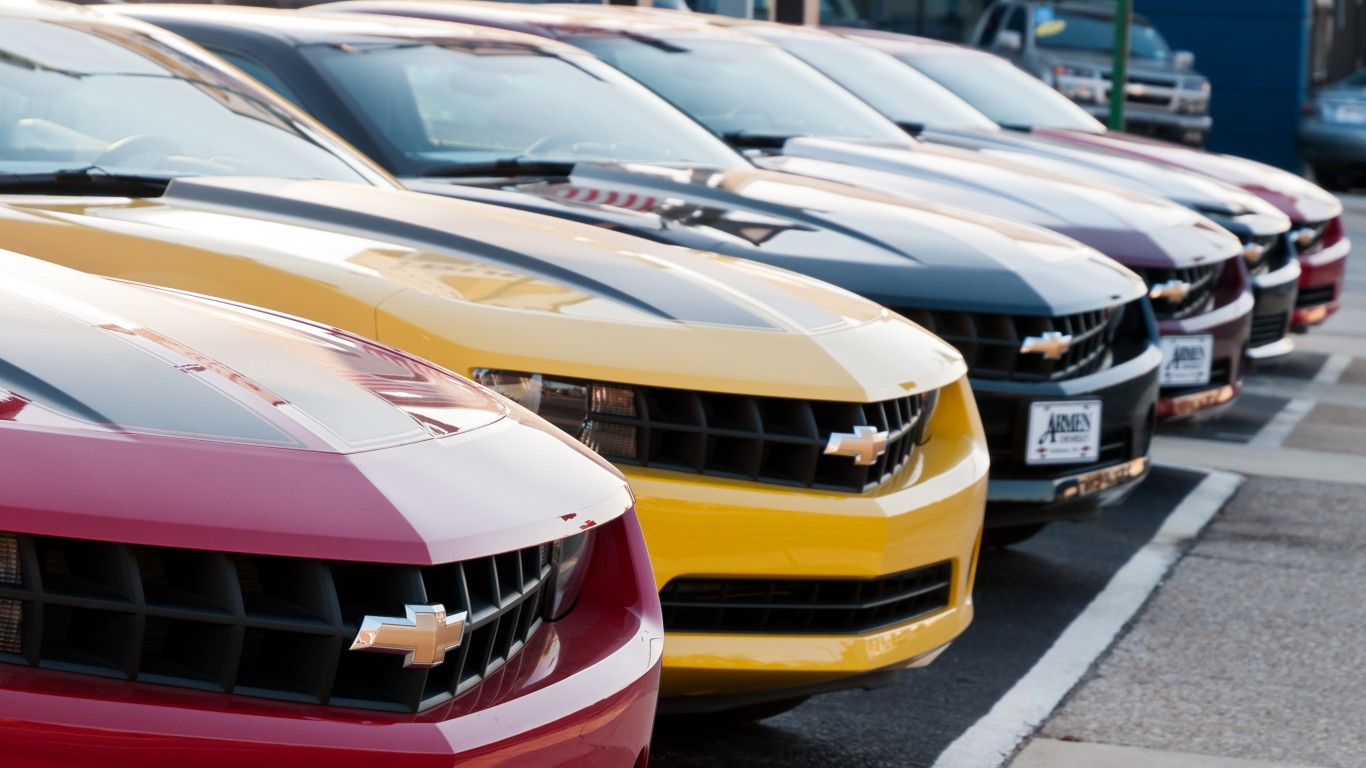Cars and Drivers
September Auto Sales Will Be Better Than They Look

Published:
Last Updated:

Automakers will be announcing U.S. new car sales for September next Tuesday, and two industry research firms are looking for sales to come in lower, both month over month and year over year. The decline is largely due to one fewer sales day this year and a sharp sales bump last year as Texas and Florida recovered from hurricanes Harvey and Irma.
Cox Automotive expects a September seasonally adjusted annual rate (SAAR) of 17.1 million new vehicles sold, up from 16.6 million in August. New vehicle sales for the month are forecast to reach 1.41 million units. Analysts at Edmunds are forecasting total September sales of about 1.39 million for a SAAR of 17 million.
Last September’s SAAR of 18.1 million was the highest since 2005 and rose by nearly 80,000 units over each of the past two years. Cox expects an “unnaturally” large decline made somewhat worse by the devastation caused this September by Hurricane Florence.
Cox also noted that there may have been some pull-forward in sales as consumers try to get into a new car before tariffs take effect. Ever-rising interest rates also have played a role in getting potential buyers into showrooms earlier. These factors have worked to keep car prices higher as well.
Here is the Cox forecast for September sales for the top five carmakers. We’ve included year-over-year and month-over-month percentage changes, along with September 2018 and September 2017 market share.
Here are the Edmunds estimates, with matching data points.
Edmunds analyst Jeremy Acevedo commented:
Labor Day sales typically help get the month of September off to a solid start. Now that we’re heading into the fourth quarter and more 2019 model year vehicles are making their way to showrooms, automakers and dealers are likely making more of a concerted effort to address lagging inventories.
Cox offered a different take on the fourth quarter:
Cox Automotive is forecasting a slowing sales pace over the remaining months of the year as buying conditions deteriorate due to higher interest rates and elevated gasoline prices. Steel and aluminum tariffs may also be negatively contributing to sales activity, by forcing automakers to hold incentive activity at more modest levels. Production costs are rising as a result of higher metal prices, and margins are being negatively impacted. With less profit margin available, tighter and targeted incentive activity is required. Days supply is also in a relatively stable position, allowing for more pricing discipline.
Used car sales are also strong, according to Edmunds. The firm sees an estimated sales volume of 3.3 million used vehicles in September, down from 3.4 million in August. September’s SAAR for used vehicles slips from 39.7 million in August to 39.6 million.
The thought of burdening your family with a financial disaster is most Americans’ nightmare. However, recent studies show that over 100 million Americans still don’t have proper life insurance in the event they pass away.
Life insurance can bring peace of mind – ensuring your loved ones are safeguarded against unforeseen expenses and debts. With premiums often lower than expected and a variety of plans tailored to different life stages and health conditions, securing a policy is more accessible than ever.
A quick, no-obligation quote can provide valuable insight into what’s available and what might best suit your family’s needs. Life insurance is a simple step you can take today to help secure peace of mind for your loved ones tomorrow.
Click here to learn how to get a quote in just a few minutes.
Thank you for reading! Have some feedback for us?
Contact the 24/7 Wall St. editorial team.